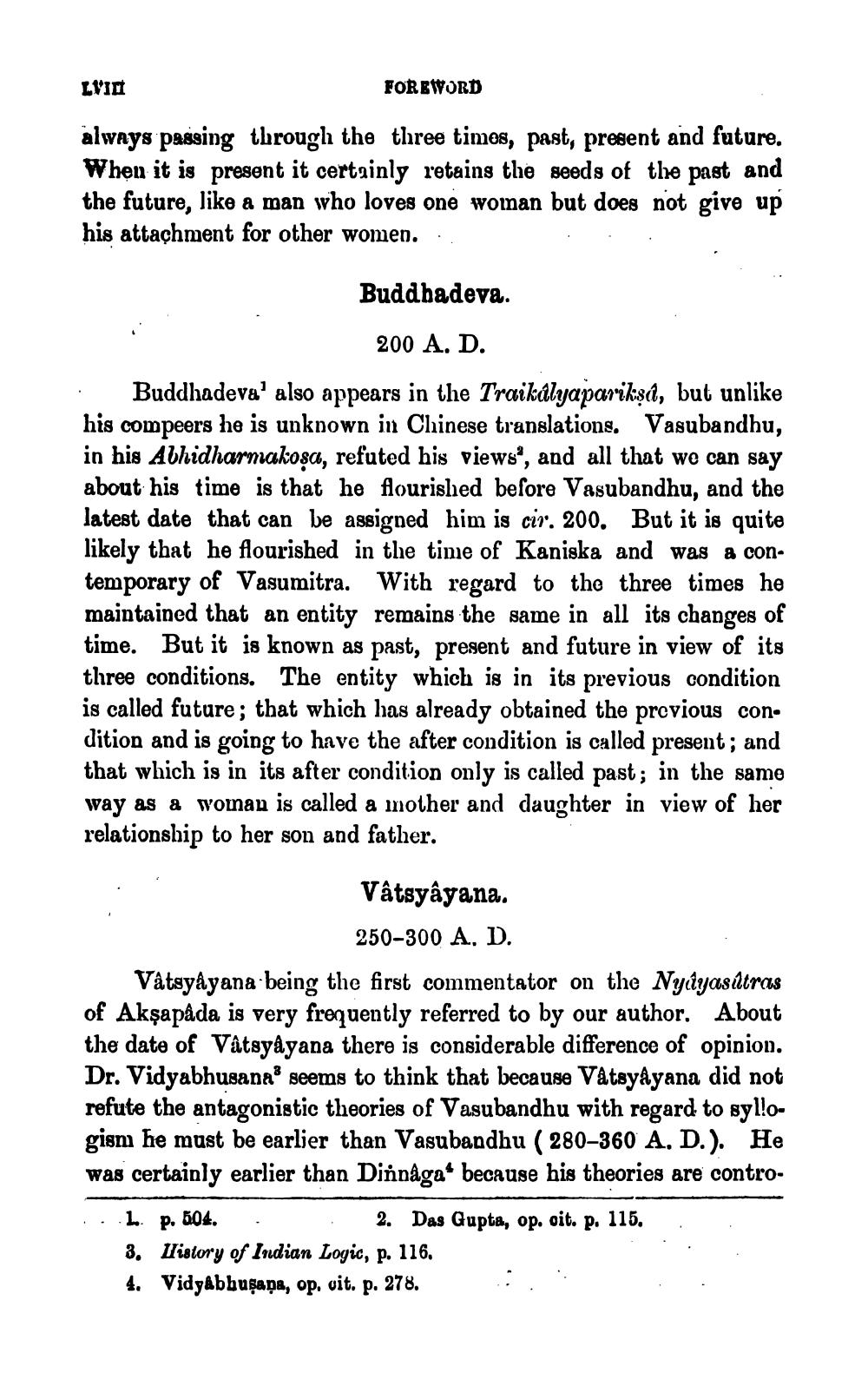________________
FOR ETYORD
always passing through the three timos, past, present and future. When it is present it certainly retains the seeds of the past and the future, like a man who loves one woman but does not give up his attachment for other women...
Buddhadeva.
200 A. D. Buddhadeva' also appears in the Traikályaparikşd, but unlike his compeers he is unknown in Chinese translations. Vasubandhu, in his Abhidharmakosa, refuted his views", and all that we can say about his time is that he flourished before Vasubandhu, and the latest date that can be assigned him is cir. 200. But it is quite likely that he flourished in the time of Kaniska and was a contemporary of Vasumitra. With regard to the three times he maintained that an entity remains the same in all its changes of time. But it is known as past, present and future in view of its three conditions. The entity which is in its previous condition is called future; that which has already obtained the previous condition and is going to have the after condition is called present; and that which is in its after condition only is called past; in the same way as a woman is called a mother and daughter in view of her relationship to her son and father.
Vâtsyâyana.
250-300 A. D. Vâtsyâyana being the first commentator on the Nyâyasitras of Akşapáda is very frequently referred to by our author. About the date of Vâtsyâyana there is considerable difference of opinion. Dr. Vidyabhusanaseems to think that because Våtsyâyana did not refute the antagonistic theories of Vasubandhu with regard to syllogism he must be earlier than Vasubandhu ( 280-360 A. D.). He was certainly earlier than Dinnagat because his theories are contro..... p. 604. . . 2. Das Gupta, op. oit. p. 115. . .
3. listory of Indian Logic, p. 116. 4. Vidyabhusana, op. cit. p. 278.




